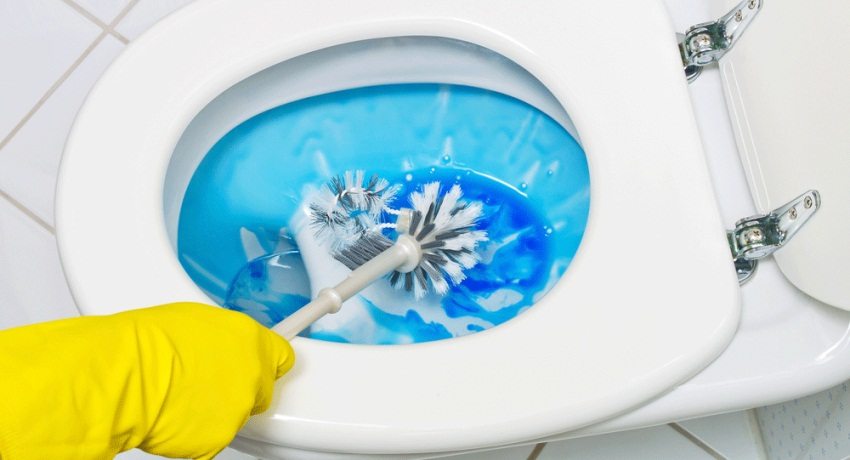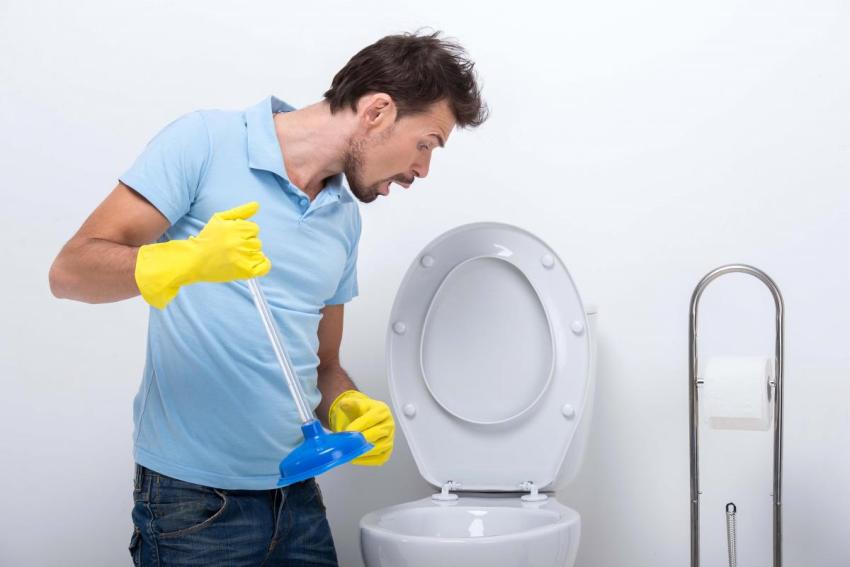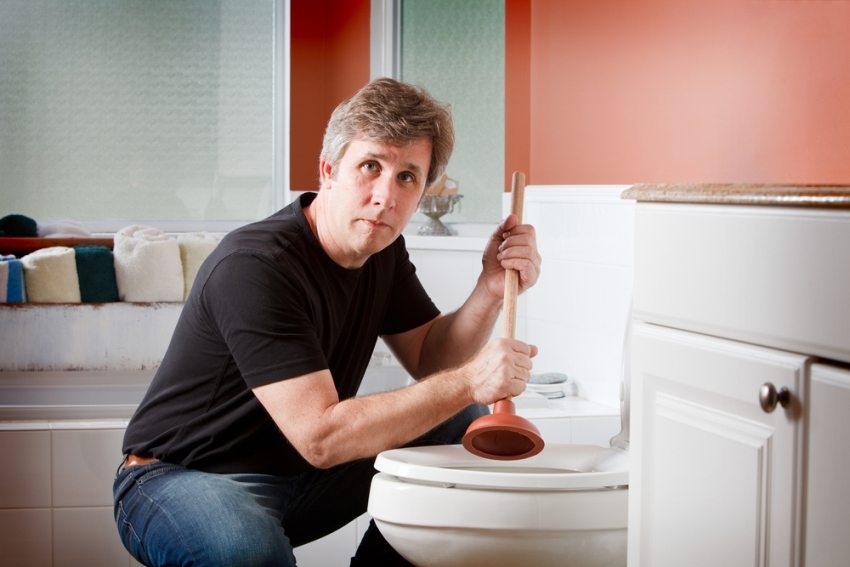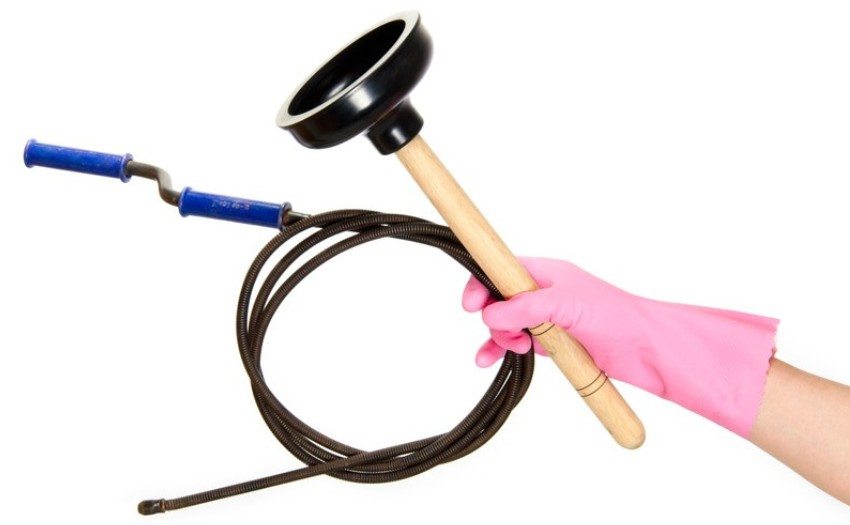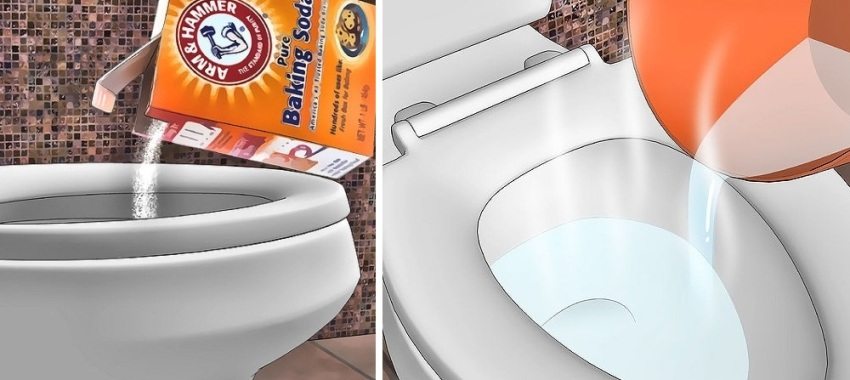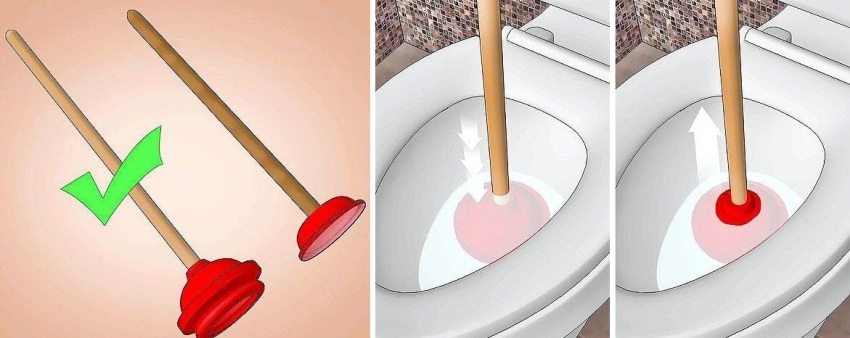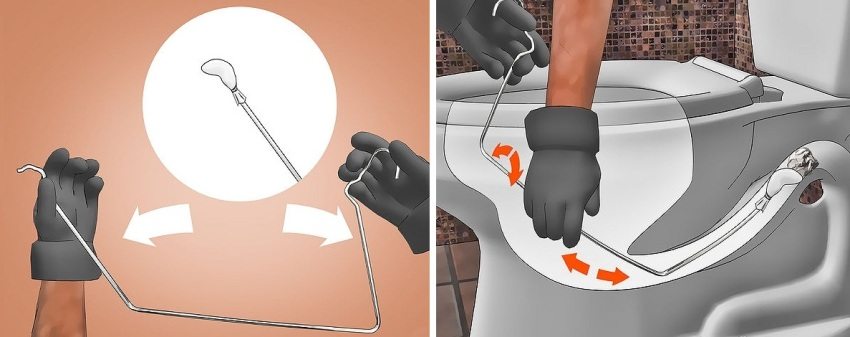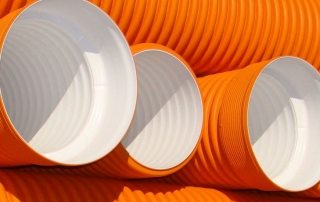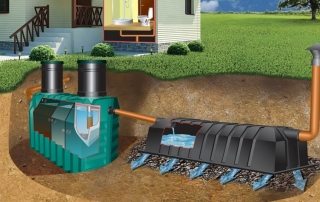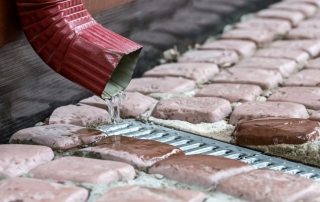Unlike a village hut with a latrine in the yard, a modern house has a warm bathroom inside the building, providing people with convenience and comfort. During operation, all plumbing devices periodically fail, and the worst nightmare of the owners is the clogging of the toilet bowl. It is important to prevent the formation of a plug in the sewer, so you need to know if the toilet is clogged, what to do at home.
Content [Hide]
- 1 The toilet is clogged, what to do at home. Main signs and causes
- 2 Determination of the location and degree of clogging
- 3 Possible options for clearing the blockage
- 4 Removing clogging with chemicals
- 5 Folk remedies for removing the blockage of the sewer
- 6 Mechanical clogging methods
- 7 Preventive measures to prevent toilet clogging
The toilet is clogged, what to do at home. Main signs and causes
What are the first signs of this unpleasant phenomenon and is it possible to clean the toilet yourself without resorting to the services of a plumber?
The main indicators of clogged drain
The occurrence of at least one of the following symptoms indicates that a blockage has occurred in the toilet drain pipe or in the sewer:
- the appearance of a persistent unpleasant odor;
- water goes into the sewer very slowly or does not go away at all;
- the appearance of feces in the toilet from the sewer pipe.
What are the reasons for the clogging of the toilet and what to do if water does not go into the drain hole? A clogged toilet can be a serious problem, which is why it is so important to establish the sources of this phenomenon.
Possible causes of a blockage in the sewer
Plumbers call the following factors leading to the occurrence of such a blockage:
- incorrect installation of the drain pipe;
- violations during the operation of the toilet.
If the sewer pipe was laid in violation of technological norms, for example, with an insufficient slope, then during the drain, a gradual accumulation of deposits in the pipe occurs. Over time, this can lead to blockages. In addition to natural human waste products, water contains minerals, which are also deposited inside the pipe.
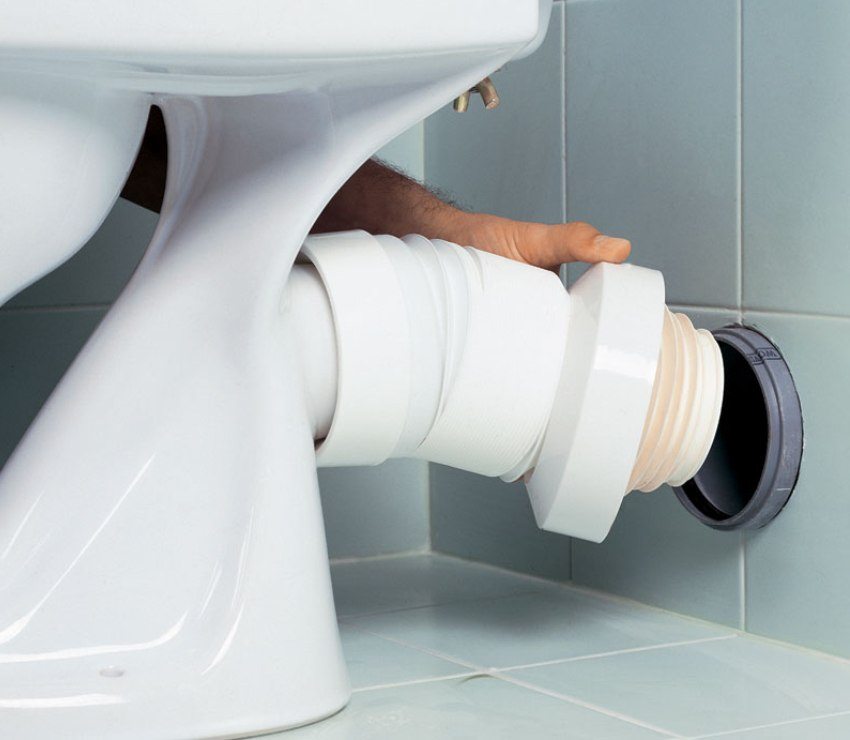
Compliance with the recommended pipe slope when installing the sewage system will help prevent clogging of the toilet in the future.
Another reason for a blockage in the sewer is the lack of sufficient ventilation.
Important! In order for the sewerage system to work correctly, air must necessarily enter the riser pipe, otherwise the rate of fluid output decreases, which can also lead to a plug.
But the most common cause of toilet clogging is human misuse. Without thinking about the consequences, household members pour into the toilet a variety of poorly soluble substances. The reason for the blockage is the food waste with large parts thrown into the drain pipe, cat litter fillers, large pieces of paper, and the like. Sometimes the hostess accidentally, along with dirty water, can pour a rag into the toilet bowl for cleaning the floors.
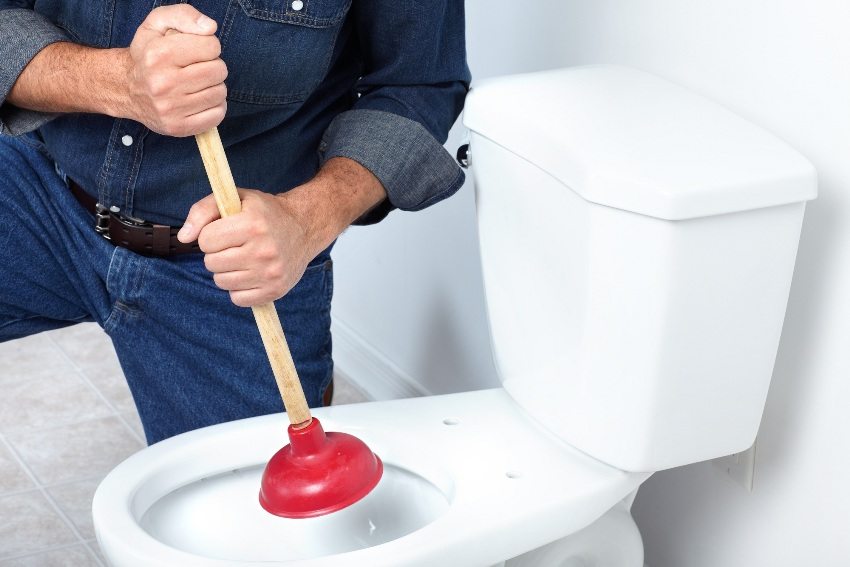
To avoid traffic jams and blockages, it is not recommended to flush food leftovers, cat litter fillers and other hard-to-dissolve items into the toilet.
Prevention to prevent clogging of the toilet will be discussed below, and now we will consider the issue of self-elimination of the plug in the drain pipe.
Determination of the location and degree of clogging
Before proceeding to cleaning the toilet, it is necessary to establish what caused the blockage, where it happened and what its degree. The choice of method and remedies will depend on this.
Related article:
How to clean sewer pipes at home: methods and means. How to quickly get rid of a blockage in the sewer: the most effective ways to eliminate pipe blockages.
A blockage can occur both in the sewer riser and locally in the toilet pipe. To determine the location of the blockage, you need to check how the water in the bathroom or sink goes down the drain.
If a low water drainage rate is noticed everywhere, then the problem is concentrated in the riser and most likely it will not be possible to clean the sewer on your own.
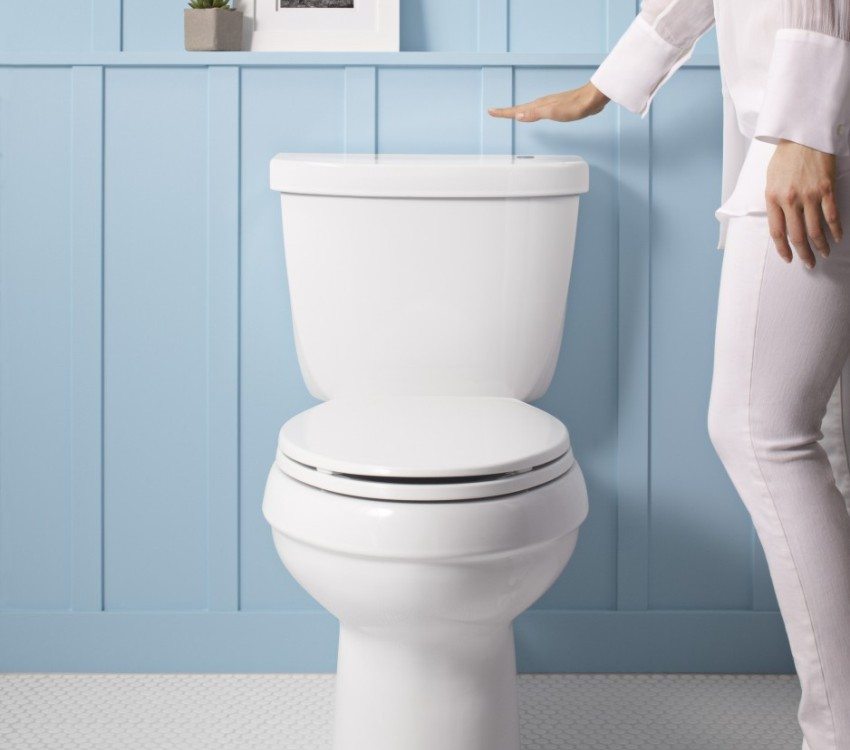
To make sure that the blockage is in the toilet, you need to check the water drain in other consumers.
In the event that the water in both plumbing points leaves as usual, then the sewer riser is in order and the toilet is clogged. What to do at home in this case and is it possible to cope with this problem on your own?
Possible options for clearing the blockage
There are several methods for cleaning the toilet drain:
- chemical - using special chemicals;
- folk - with the help of home remedies;
- mechanical - using plumbing tools.
When the toilet is clogged, what to do first? First you need to determine the degree of blockage. If water goes into the sewer, albeit slowly, then the level of clogging with garbage can be designated as small.
If you suspect that solid, poorly soluble objects have got into the drain pipe, for example, the toilet bowl has become clogged with paper or a floor rag, you need to try to remove it from there directly with your hands. This procedure may be the fastest and most effective. First of all, you need to protect yourself by wearing rubber gloves and possibly covering your nose with a gauze bandage. Then put your hand into the drain hole and feel for the cause of the blockage. A rag and large debris can be easily pulled out of the pipe by hand.
If the clogging is not associated with a plug of solid objects, then you can clean the toilet drain pipe with special chemicals.
Removing clogging with chemicals
The most common means of cleaning the toilet are "Mole", "Tiret", "Flup" and other well-known chemistry for cleaning sewer pipes. You need to use these drugs in strict accordance with the instructions.
Important! When cleaning the toilet, do not use several different household cleaning products at the same time, they can react and will only worsen the situation.
After removing the blockage using a chemical method, it is necessary to thoroughly rinse the toilet bowl drain pipe with several liters of water.
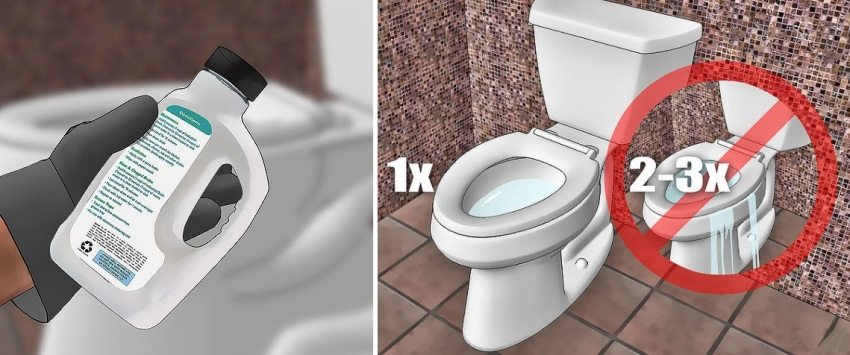
To clear the blockage, do not increase the recommended dose, and also use several chemicals at the same time.
Folk remedies for removing the blockage of the sewer
For those who prefer to use aggressive chemicals in the house as little as possible, there is an alternative method of removing the blockage. If the toilet is clogged, how to clean it at home without resorting to popular chemicals? The simplest folk remedy for cleaning sewer pipes is baking soda. Dissolve half a pack of regular baking soda in the toilet water, mix well and wait a little. With a slight blockage, this active alkali will dissolve the deposits inside the drain pipe and unclog the toilet.
Mechanical clogging methods
If the clogging of the toilet bowl with chemical or folk remedies cannot be eliminated, one of the options for mechanical cleaning can be used.
Cleaning with a plunger
Very often, owners throw various small particles, such as cat litter, into the toilet, which also leads to clogging of the toilet. If the toilet is clogged with cat litter, which has formed a cork, then you can break the blockage with a plunger. This plumbing tool must be placed on the drain hole and vigorously "pumped" by pressing the handle. The diameter of the plunger must be larger than the diameter of the drain hole so that its rubber part completely covers the drain in the toilet bowl. The pressure drop created in the pipe will either push the debris out or down the drain.
Useful advice! For more effective cleaning with a plunger, it is advisable to close the drain holes at all plumbing points, including the upper drain hole in the bathroom.
Punching "doll"
A more difficult blockage in a toilet's sewer pipe can be cleared out with a handy tool called a doll by plumbers. A small bag is filled with sand and tied tightly with a rope. Then the bag together with the drain is sharply lowered into the opening of the toilet bowl, knocking out the cork and cleaning the pipe. This method is especially effective when toilet paper becomes clogged. After punching, the "doll" is pulled out of the drain hole, and the toilet is well washed.
Plumbing cable
Serious toilet blockages can be cleaned with a plumbing cable. This tool serves to mechanically remove blockages and is a thick and long metal wire with a handle at the end. Lowering the end of the cable into the toilet drain and slowly scrolling the handle, we move it further into the pipe. Gradually the cable will reach the cork and push it through. This procedure must be repeated several times until the maximum effect is achieved.
Important! All methods, including mechanical ones, at the end involve thoroughly flushing the toilet bowl and drain pipe with plenty of water with the addition of soda or special detergents.
Preventive measures to prevent toilet clogging
In order for the toilet to function properly, it is necessary to follow certain rules for the operation of this plumbing point and periodically carry out preventive procedures.
The most common causes of clogging toilet bowl are all kinds of human waste products.
Important! Large and solid food waste, insoluble fillers, toilet paper, spoiled fruits, vegetables and other foreign objects must not be thrown into the toilet!
Before pouring fermented pickled tomatoes or sour soup into the toilet, drain the liquid into a separate bowl and throw the solid parts into the trash can. After that, the liquid can be poured into the toilet. To avoid clogging the sewer, the used cat litter must be collected in a separate bag and taken to the trash (or disposed of in another way, for example, fertilizing the soil with it).
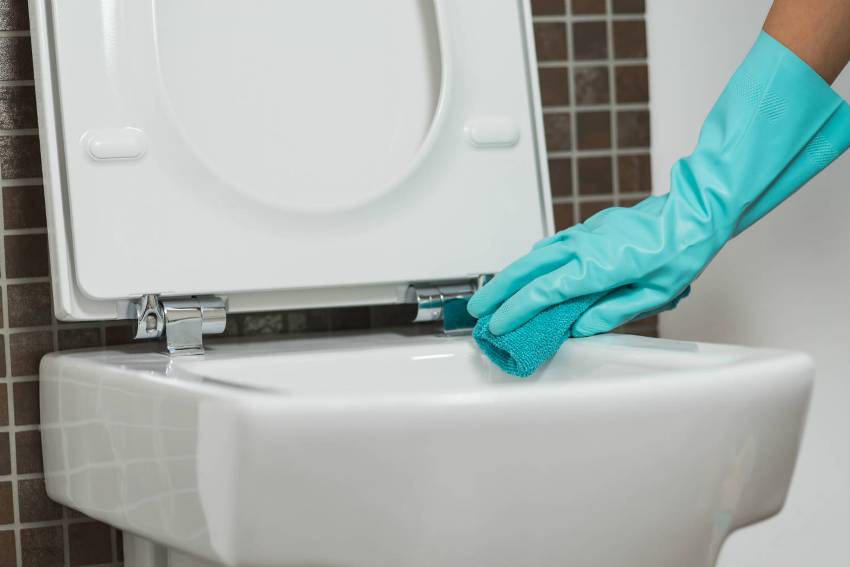
Regular cleaning and treatment of the toilet with special products will help prevent traffic jams and blockages in the sewer
Useful advice! Approximately once every three months, the toilet bowl must be treated with special agents against the formation of salt deposits.
These drugs are available in specialized supermarket departments. According to the instructions, the cleaner is poured into a drain pipe and left overnight. In the morning, the toilet is flushed with plenty of water.
One of the mandatory preventive procedures is hygiene. toilet... To clean the toilet, a variety of liquid and powdery products are used, with the addition of disinfectants, and a special brush. You can also clean the surface of the toilet with regular baking soda and vinegar. With proper use, this comfort zone will serve you well for many years.
